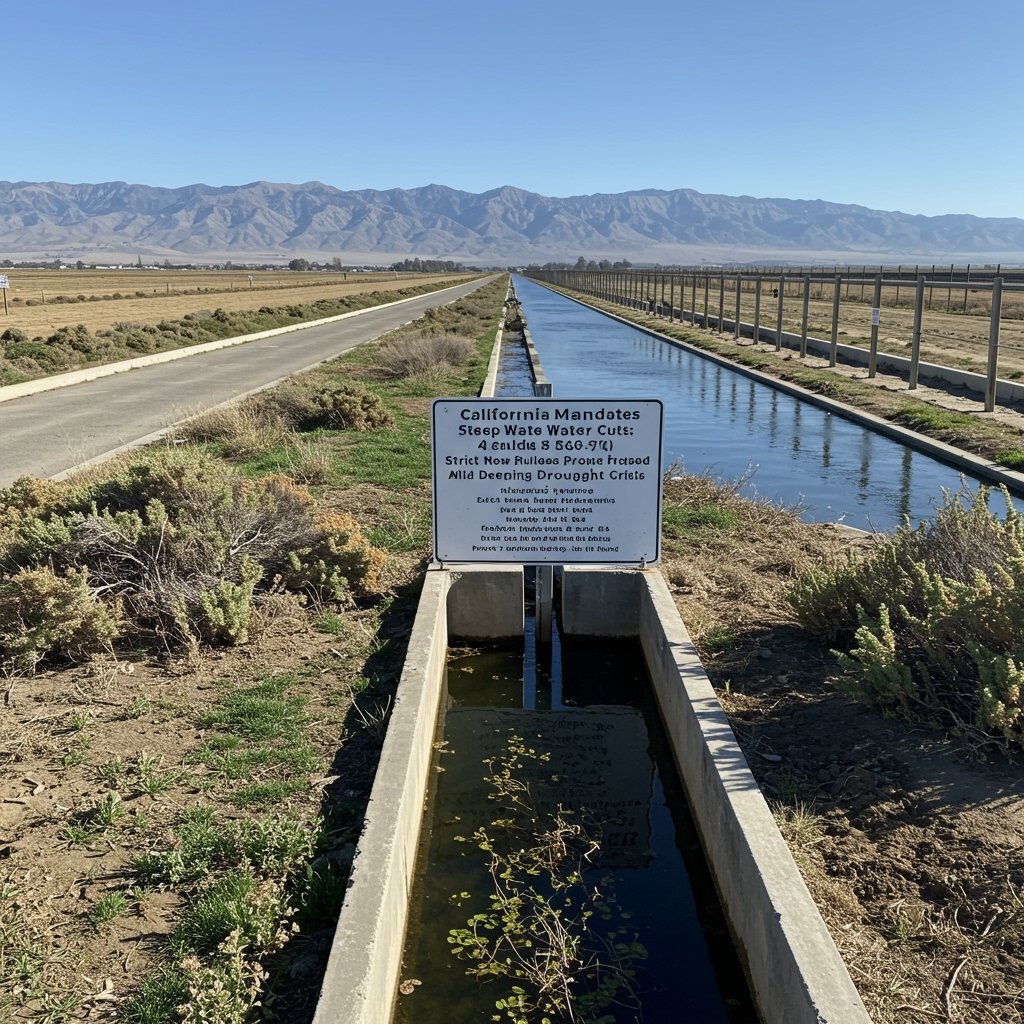California Regulators Propose Significant Mandatory Water Conservation
Sacramento, CA – Facing increasingly dire drought conditions across the state, California’s State Water Resources Control Board (SWRCB) on Tuesday unveiled a series of proposed emergency regulations that would mandate significant water conservation measures statewide. The move signals a critical shift from voluntary conservation requests to enforceable restrictions, underscoring the severity of the current water crisis.
The proposal comes as California endures a multi-year drought that has severely depleted water supplies, leaving reservoirs at critically low levels. Officials specifically cited the alarming state of reservoirs like Lake Shasta, currently holding only 38% of its capacity and just 50% of its historical average for this time of year. With projections indicating a potentially hot and dry summer ahead, water managers are seeking aggressive actions to preserve precious water reserves.
Details of the Proposed Emergency Regulations
The core of the proposed regulations targets urban water use, a significant component of statewide demand. A key provision stipulates limiting outdoor watering for urban users to a maximum of two days per week. This restriction aims to curtail the heavy water use associated with landscape irrigation, which often constitutes a substantial portion of residential water consumption, particularly during warmer months.
Beyond urban households, the emergency regulations also include enhanced reporting requirements and conservation mandates for large commercial, industrial, and agricultural users across California. While agriculture is the state’s largest water user, the proposed rules would require these large-scale operations to increase their water-use efficiency and provide more detailed data on their water consumption. The specifics of these requirements aim to ensure conservation efforts are comprehensive and apply to all major sectors, acknowledging the interconnectedness of the state’s water system.
Dire Water Supply Outlook
The rationale behind the SWRCB’s urgent action is rooted in the stark reality of California’s current water supplies. Record-low precipitation in some areas, combined with poor snowpack runoff from the Sierra Nevada mountains – a crucial source of summer water supply – has exacerbated reservoir conditions. Lake Shasta serves as a critical bellwether for the state’s water health, being the largest reservoir and a cornerstone of the Central Valley Project, which supplies water to vast agricultural lands and urban areas. Its current level of 38% capacity highlights the magnitude of the deficit.
Other major reservoirs across the state are also registering significantly below average levels, painting a grim picture for water availability heading into the dry season. The forecasts for a warm, dry summer further amplify concerns, suggesting that natural replenishment is unlikely in the coming months, necessitating strict demand management.
Transition from Voluntary Efforts
The decision to pursue mandatory restrictions follows months of appeals for voluntary conservation that have not yielded sufficient statewide water savings. Governor Gavin Newsom’s administration had previously urged Californians to voluntarily cut their water use by 15% compared to 2020 levels. While some areas saw significant reductions, statewide progress remained inconsistent and ultimately fell short of the levels deemed necessary to navigate the worsening drought conditions.
Governor Newsom’s office expressed strong support for the SWRCB’s proposed emergency regulations. A statement from his office highlighted the urgent necessity of implementing aggressive action. It emphasized that voluntary conservation efforts, while important, have proven insufficient in the face of extended drought periods and critically low water reserves, making mandatory measures unavoidable to protect essential water supplies for communities and ecosystems.
Path to Implementation
The proposed emergency regulations will now undergo a formal review process by the SWRCB. This typically includes a period for public comment before the board considers formal adoption. If approved by the SWRCB, the regulations could take effect relatively quickly, given their emergency nature, allowing state and local water agencies to begin enforcement ahead of the peak summer demand period. The implementation of these rules would empower local water suppliers to issue penalties for non-compliance, adding legal weight to conservation efforts.
Broader Implications
The mandatory restrictions are expected to impact daily life for millions of Californians and pose challenges for businesses and agricultural operations. Residents will need to significantly adjust their outdoor watering habits, potentially leading to changes in landscaping. Commercial and industrial users will face increased scrutiny of their water use and be required to implement more efficient practices. For agriculture, a sector already heavily impacted by reduced water allocations, the enhanced reporting and conservation requirements add another layer of adaptation needed to cope with the drought’s realities.
Ultimately, the proposed regulations reflect the state’s escalated response to a deepening environmental crisis. By moving to mandatory conservation, California is taking a definitive step to manage its limited water resources more effectively, aiming to stretch supplies through the current dry period and build resilience against future drought cycles, which are projected to become more frequent and intense due to climate change.



















